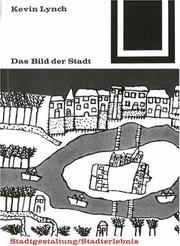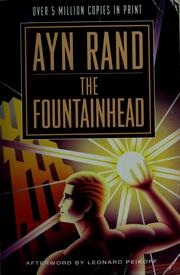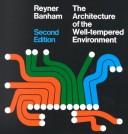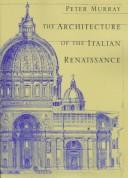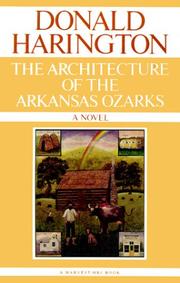Are you fascinated by the world of architecture? Do you find yourself drawn to the stories behind iconic buildings? If so, then you’re in for a treat! We’ve compiled a list of the 20 best books about buildings that will take you on a journey through time and space. From ancient wonders to modern marvels, these books offer a captivating exploration of the built environment. Whether you’re an aspiring architect or simply a curious reader, these buildings books are sure to inspire and delight.
Contents
- 1 The Architecture of Happiness
- 2 The Death and Life of Great American Cities
- 3 The Image of the City
- 4 Delirious New York
- 5 The Fountainhead
- 6 The Poetics of Space
- 7 The Eyes of the Skin
- 8 The Language of Architecture
- 9 The Architecture of the City
- 10 The Ten Books on Architecture
- 11 The Architecture of the Well-Tempered Environment
- 12 The Architecture of the Jumping Universe
- 13 The Architecture of the City
- 14 The Architecture of the Everyday
- 15 The Architecture of the Absurd
- 16 The Architecture of Happiness
- 17 The Architecture of the Italian Renaissance
- 18 The Architecture of the Arkansas Ozarks
- 19 The Architecture of the Shakers
- 20 The Architecture of the Southwest
- 21 Conclusion
The Architecture of Happiness
by Alain de Botton
The Architecture of Happiness by Alain de Botton: A Book on Buildings that Unlocks the Secrets of Serene Spaces
Step into the captivating world of architectural wonder with Alain de Botton’s thought-provoking masterpiece, The Architecture of Happiness. This extraordinary book about buildings takes readers on a journey through the hidden depths of our built environment, revealing the profound impact that architecture has on our lives.
De Botton’s exploration begins with a simple question: why do certain buildings resonate with us on a deeply emotional level, while others leave us feeling cold and disconnected? By delving into the intricate relationship between our inner selves and the spaces we inhabit, he unveils the profound influence architecture has on our well-being and happiness.
Through a rich tapestry of philosophical insights, historical anecdotes, and captivating illustrations, The Architecture of Happiness invites readers to ponder the power of design in shaping our moods, relationships, and sense of self. De Botton reveals how even the smallest details, from the curve of a wall to the play of light, can evoke powerful emotions and transform our experience of a space.
This buildings book is not just a treatise for architects or enthusiasts of the field; it is a captivating exploration that unveils the universal longing for harmony and beauty that lies at the core of our human nature. De Botton reminds us that the spaces we inhabit are not merely physical structures, but reflections of our inner desires and aspirations.
Whether you find solace in the grandeur of Gothic cathedrals or the simplicity of a cozy cottage, The Architecture of Happiness offers a profound appreciation for the ways in which our built environment can nourish our souls and elevate our everyday existence. It reminds us that the pursuit of happiness can be found not only in our relationships and achievements but also in the very bricks and mortar that surround us.
So, if you are ready to embark on a journey of self-discovery through the lens of architecture, grab a copy of The Architecture of Happiness and let Alain de Botton be your guide. Prepare to see the world of buildings through new eyes, as you unlock the secrets of serene spaces and embrace the profound impact that architecture can have on our lives.
The Death and Life of Great American Cities
by Jane Jacobs
The Death and Life of Great American Cities is not just another book on buildings; it’s a captivating manifesto that challenges the conventional wisdom about urban planning and revitalizes our understanding of the very essence of cities.
In this groundbreaking work, Jane Jacobs, a visionary writer and activist, takes us on a journey through the bustling streets and vibrant neighborhoods of mid-20th century New York City. Rather than focusing solely on the physical structures themselves, Jacobs delves into the intricate web of relationships that make cities thrive.
With her sharp intellect and keen observations, Jacobs argues that the true vitality of a city lies in its diverse mix of people and activities. She highlights the importance of vibrant street life, mixed-use neighborhoods, and a sense of community where individuals can truly engage with each other.
This buildings book challenges the prevailing urban planning theories of the time, which promoted large-scale redevelopment and isolated zoning, often resulting in the destruction of entire neighborhoods. Jacobs argues that these top-down approaches fail to consider the intricate social fabric that gives cities their unique character and vitality.
The Death and Life of Great American Cities is not just a plea for better urban planning; it is a call to action for all citizens to become active contributors in shaping their own communities. Jacobs encourages us to appreciate the small details, the everyday interactions, and the organic evolution of our cities, rather than succumbing to the allure of grandiose projects that often lead to the demise of urban life.
With its thought-provoking insights and captivating prose, this book about buildings will forever change the way you perceive and appreciate the cities you inhabit. It is a passionate argument for the preservation and enhancement of the vibrant, diverse, and human-scale environments that make our cities truly great.
The Image of the City
by Kevin Lynch
Are you fascinated by the intricate web of streets and pathways that make up our cities? Do you find yourself marveling at the unique character and identity of different neighborhoods? If so, then “The Image of the City” by Kevin Lynch is the perfect book for you.
Considered a classic in urban planning, this captivating book explores the relationship between individuals and their environment, focusing specifically on the built environment. Lynch delves deep into the essence of our cities, examining how people perceive, navigate, and form mental images of the urban landscape.
Through extensive research and analysis, Lynch unveils the elements that contribute to a city’s distinctiveness and legibility. He introduces five key elements – paths, edges, districts, nodes, and landmarks – that shape our perception of the urban environment. By understanding these elements, Lynch argues, we can gain a greater appreciation for the intricate tapestry of buildings, streets, and public spaces that make up our cities.
What sets this book apart is Lynch’s ability to blend theory with real-world examples. He takes readers on a journey through various cities, both historical and contemporary, showcasing how different urban designs can impact our experience and understanding of a place. From the iconic avenues of Paris to the labyrinthine streets of Boston, each city serves as a case study that illuminates the principles Lynch introduces.
Whether you are an architect, urban planner, or simply someone with a passion for the built environment, “The Image of the City” offers a thought-provoking exploration of how we interact with the spaces around us. It challenges us to consider the impact of our surroundings on our daily lives and encourages us to reimagine the potential of our cities.
So, if you’re ready to dive into a captivating book about buildings, streets, and the intangible essence that makes each city unique, “The Image of the City” is a must-read. Get ready to see your urban surroundings in a whole new light.
Delirious New York
by Rem Koolhaas
Delirious New York – A Book on Architecture
Welcome to the mesmerizing world of Delirious New York, a captivating exploration of the iconic cityscape that has come to define modern architecture. Rem Koolhaas, the visionary author and architect, takes us on a journey through the urban jungle, unraveling the secrets and dreams that lie within the concrete and steel of New York City.
In this groundbreaking book on buildings, Koolhaas presents a unique perspective on the evolution of architecture, delving into the historical, social, and cultural forces that have shaped the city’s iconic skyline. Drawing upon his own experiences as a designer and urban planner, he offers a fresh and thought-provoking analysis of the relationship between buildings and the people who inhabit them.
But Delirious New York is more than just a book about buildings. It is a love letter to the city itself, celebrating the chaos, energy, and grandeur that make New York a truly extraordinary place. Koolhaas explores the idea of “delirium” as a driving force behind the city’s architecture, arguing that it is the very madness and excess of New York that has allowed it to become a global symbol of modernity.
Through vivid descriptions, stunning illustrations, and insightful analysis, Koolhaas takes us on a journey through the history of New York’s most iconic buildings, from the skyscrapers of the early 20th century to the postmodern masterpieces of the present day. He explores the influence of cultural movements such as art, literature, and film on the city’s architecture, revealing the intricate tapestry of influences that have shaped the cityscape.
Whether you are an architect, an urban planner, or simply a lover of cities, Delirious New York is a must-read. It transcends the traditional boundaries of architecture literature, offering a fresh and inspiring perspective on the complex relationship between buildings, cities, and the people who inhabit them. Prepare to be captivated, enthralled, and, above all, deliriously inspired by this remarkable buildings book.
The Fountainhead
by Ayn Rand
The Fountainhead is an extraordinary book about architecture, creativity, and the power of individualism. It is a captivating exploration of the human spirit set against the backdrop of the architectural world.
The Poetics of Space
by Gaston Bachelard
The Poetics of Space: A Journey into the Soul of Architecture
Welcome to the enchanting world of Gaston Bachelard’s The Poetics of Space, a mesmerizing exploration of the profound relationship between human beings and the spaces they inhabit. This extraordinary book takes us on a captivating journey into the very essence of architecture, delving into the intricate connection between the human imagination and the places we call home.
More than just a book about buildings, The Poetics of Space unveils the hidden poetry and symbolism that lies within the spaces we occupy. Bachelard invites us to ponder the significance of our surroundings and how they shape our thoughts, memories, and dreams. Drawing on philosophy, literature, and psychology, he illuminates the ways in which our experiences of space influence our understanding of the world, and ultimately, ourselves.
Through his lyrical prose, Bachelard uncovers the intimate relationship between humans and their dwellings, offering profound insights into the emotional and psychological impact of architectural spaces. From the cozy corners of our childhood homes to the vast expanses of nature, he invites us to reflect on the powerful sensations evoked by different types of spaces and the memories they hold.
With an astute eye for detail, Bachelard explores the myriad dimensions of our built environments, from the nooks and crannies that harbor secrets and mysteries, to the vastness of grand cathedrals that inspire awe and transcendence. He delves into the symbolism of doors, windows, and staircases, unraveling the layers of meaning they hold and the emotions they evoke.
By encouraging us to contemplate the significance of the spaces we inhabit, Bachelard invites us on a journey of self-discovery. He reveals how our environment molds our thoughts, influences our creativity, and shapes our identities. Through his eloquent prose, The Poetics of Space transforms our perception of buildings, reminding us that they are not merely inert structures, but vessels of meaning and significance that intertwine with our very being.
So, embark on this captivating exploration of the soul of architecture, and prepare to see the world around you with new eyes. Discover the enchanting poetry hidden within the walls, windows, and rooftops of the spaces we call home, and uncover the profound connection between our innermost selves
The Eyes of the Skin
by Juhani Pallasmaa
The Eyes of the Skin is not just another book on buildings, it is a captivating exploration of architecture and its profound impact on our senses. Juhani Pallasmaa’s masterpiece invites us to delve into the world of buildings, to see beyond their physicality and discover the deeper emotional and sensory experiences they offer.
The Language of Architecture
by Andrea Simitch and Val Warke
The Language of Architecture is a captivating book on the art of designing and constructing magnificent structures. With a blend of insightful analysis and stunning visuals, this book takes readers on a captivating journey through the intricate world of architecture.
From towering skyscrapers to intricate bridges, this book about buildings explores the language that architects use to communicate their ideas. It delves into the symbiotic relationship between form and function, showcasing how buildings can be both aesthetically pleasing and practical.
With vivid descriptions and beautiful illustrations, this buildings book uncovers the hidden meanings behind architectural elements. It unravels the secrets of symmetry, explores the power of materials, and reveals how design choices can shape the way we experience a space.
Whether you’re an aspiring architect, a design enthusiast, or simply curious about the world around you, The Language of Architecture is an essential read. It will open your eyes to the hidden beauty of the built environment and inspire you to see buildings in a whole new light.
The Architecture of the City
by Aldo Rossi
The Architecture of the City by Aldo Rossi is a fascinating book about the intricacies and symbolism of urban structures. It delves into the essence of what makes a city, discussing the way buildings shape and define our urban landscapes. This thought-provoking book on architecture explores the connections between buildings, history, and the human experience, offering a unique perspective on the urban environment. If you’re looking for a captivating buildings book that will challenge your perception of cities, The Architecture of the City is a must-read.
The Ten Books on Architecture
by Vitruvius
The Ten Books on Architecture, also known as Vitruvius’ masterpiece, is a timeless book on buildings that has influenced architects and engineers for centuries.
This ancient book about buildings was written by Marcus Vitruvius Pollio, a Roman architect and engineer, during the first century BCE. It is a comprehensive guide that covers various aspects of architecture, including the design, construction, and maintenance of buildings.
Vitruvius believed that architecture should be based on three fundamental principles: firmitas (firmness), utilitas (commodity), and venustas (delight). He argued that a well-designed building should not only be structurally sound but also functional and aesthetically pleasing.
Each of the ten books delves into different topics related to architecture. The first book provides an introduction to the field, discussing the qualities and education required to become an architect. The subsequent books cover a wide range of subjects, such as the principles of design, the selection of building materials, the construction of temples, public buildings, and private houses, as well as the planning and execution of urban projects.
Throughout the buildings book, Vitruvius draws on his own experiences and observations, as well as references to the works of renowned architects of his time. He also includes detailed illustrations and diagrams to help readers better understand his concepts.
Despite being written over two thousand years ago, this book on buildings remains highly relevant today. Architects and engineers continue to find inspiration in Vitruvius’ principles and methods, and many of his ideas and theories have stood the test of time. Whether you are a professional in the field or simply have an interest in architecture, The Ten Books on Architecture is a must-read for anyone who wants to delve into the fascinating world of building design and construction.
The Architecture of the Well-Tempered Environment
by Reyner Banham
Welcome to the world of architecture! If you’re interested in delving into the fascinating realm of structures, designs, and urban environments, then look no further than Reyner Banham’s masterpiece, The Architecture of the Well-Tempered Environment.
This extraordinary book is a treasure trove of knowledge for anyone with a passion for buildings, architecture, and the built environment. Banham takes us on an exhilarating journey through the history of structures, exploring the intricate relationship between humans and the spaces they inhabit.
But make no mistake, this isn’t just any old book about buildings. Banham’s eloquent prose and insightful analysis transform this into a captivating exploration of the very essence of architecture. He delves deep into the evolution of architectural styles, from ancient civilizations to the modern era, unraveling the intricate threads that connect them all.
With a keen eye for detail and a profound understanding of the subject matter, Banham guides us through the intricacies of design principles, technological advancements, and the impact of buildings on our daily lives. He challenges conventional wisdom and invites us to question the very nature of the spaces we inhabit.
So, whether you’re an aspiring architect, a history enthusiast, or simply someone who appreciates the beauty and functionality of buildings, this is the ultimate buildings book for you. Banham’s deep knowledge and infectious passion for the subject will leave you yearning for more, as you embark on a thrilling exploration of the architecture that shapes our world.
The Architecture of the Jumping Universe
by Charles Jencks
The Architecture of the Jumping Universe is an extraordinary book about the magnificent world of structures. Combining art, science, and philosophy, Charles Jencks takes us on a thrilling journey through the realm of architecture.
Step into this mesmerizing exploration and you’ll quickly realize that this is not just any book on buildings. With his unparalleled wit and wisdom, Jencks unveils the secrets of the built environment, revealing how buildings are not static entities but living, breathing organisms.
Prepare to be astonished as you delve into the depths of this buildings book. Jencks skillfully weaves together a tapestry of ideas, from the iconic to the obscure, as he explores the interconnectedness of architecture, culture, and the universe at large.
As you flip through the pages, you’ll encounter a myriad of architectural wonders that span across time and space. From ancient civilizations to futuristic visions, the book about buildings showcases the diversity and ingenuity of human creativity.
But The Architecture of the Jumping Universe is not just a collection of pretty pictures. It challenges us to question our assumptions and perceive buildings in a new light. With each chapter, Jencks unveils layers of meaning, guiding us to contemplate the deeper significance behind the structures that surround us.
So, whether you’re an architecture enthusiast or simply curious about the world we inhabit, this book is a must-read. It will ignite your imagination, broaden your horizons, and forever change the way you see buildings.
The Architecture of the City
by Spiro Kostof
The Architecture of the City by Spiro Kostof is a captivating exploration of the urban landscape, a book that takes us on an architectural journey through time and space. More than just a buildings book, it delves into the intricate relationship between people and their built environment.
The Architecture of the Everyday
by Steven Harris and Deborah Berke
The Architecture of the Everyday is a captivating book that delves into the fascinating world of our built environment. If you’ve ever wondered about the stories behind the structures that surround us, then this is the perfect book about buildings for you.
Written by Steven Harris and Deborah Berke, two renowned architects, this buildings book takes us on a journey through the everyday structures that shape our lives. From humble houses to towering skyscrapers, the authors explore the intricate details and design choices that make each building unique.
But this book goes beyond simply discussing the aesthetics of architecture. It delves into the social, cultural, and historical aspects that influence the creation of our built environment. Through engaging anecdotes and thought-provoking analysis, Harris and Berke shed light on the hidden meanings and symbolism behind the structures we often take for granted.
Whether you’re an architecture aficionado or simply curious about the world around you, The Architecture of the Everyday is a must-read. It will open your eyes to the complex interplay between people and their surroundings, and leave you with a newfound appreciation for the book on buildings that shape our everyday lives.
The Architecture of the Absurd
by John Silber
Looking for a captivating book about buildings that will challenge your perception of architecture? Look no further than The Architecture of the Absurd by John Silber. This thought-provoking book takes you on a journey through the eccentric, surreal, and downright bizarre world of modern architecture.
Silber, a renowned philosopher and educator, explores how architects have pushed the boundaries of design, often creating structures that defy logic and common sense. From tilted skyscrapers to upside-down houses, he examines the motivations behind these unconventional buildings and the impact they have on our understanding of space and functionality.
But The Architecture of the Absurd is not just a book on buildings; it’s a fascinating exploration of human creativity and the lengths we go to express our individuality. Silber delves into the psychology of architects and their desire to leave a lasting mark on the world, even if it means challenging traditional notions of what a building should be.
With stunning photographs and insightful analysis, this buildings book is a visual feast for the eyes and a source of intellectual stimulation. Silber’s engaging writing style and ability to make complex concepts accessible will captivate both architecture enthusiasts and casual readers alike.
So, if you’re ready to embark on a mind-bending journey through the world of architecture, grab a copy of The Architecture of the Absurd and prepare to have your perception of buildings turned upside down.
The Architecture of Happiness
by Witold Rybczynski
The Architecture of Happiness by Witold Rybczynski is a captivating book about buildings that delves into the profound impact architecture has on our emotions and well-being. Rybczynski explores how the design, materials, and aesthetics of buildings shape our daily lives and influence our happiness.
The Architecture of the Italian Renaissance
by Peter Murray
The Architecture of the Italian Renaissance by Peter Murray is a captivating book on buildings that takes readers on a journey through the magnificent structures of one of the most influential periods in architectural history. This book about buildings is a treasure trove of knowledge, filled with vibrant illustrations and insightful analysis that will leave you in awe of the grandeur and beauty of the Italian Renaissance. From the iconic dome of Florence’s Duomo to the graceful arches of the Colosseum, Murray delves into the intricate details and fascinating stories behind these masterpieces of architecture. Whether you are an architecture enthusiast or simply curious about the history of buildings, this remarkable buildings book is a must-read that will transport you to a world of timeless beauty and innovation.
The Architecture of the Arkansas Ozarks
by Donald Harington
The Architecture of the Arkansas Ozarks is a captivating book on the enchanting structures that dot the landscape of the Ozark Mountains in Arkansas. This mesmerizing tome takes readers on a journey through the rich history and unique architectural styles that define this picturesque region. Delving into the design, construction, and cultural significance of these extraordinary edifices, the book offers a fascinating exploration of the buildings that have shaped the Ozarks. With stunning photographs and insightful commentary, this buildings book is a must-read for anyone with an appreciation for the beauty and artistry found in the structures that grace our world.
The Architecture of the Shakers
by Julie Nicoletta
The Architecture of the Shakers by Julie Nicoletta is a captivating book that delves into the world of these unique religious communities through the lens of their remarkable buildings. This book about buildings takes readers on a journey through the stunning architecture of the Shakers, showcasing their ingenious designs and meticulous craftsmanship.
The Architecture of the Southwest
by Rexford Newcomb
The Architecture of the Southwest is a captivating book on buildings that takes you on a mesmerizing journey through the rich architectural heritage of the American Southwest. This remarkable book about buildings explores the unique blend of influences that have shaped the region’s architectural landscape, from the ancient Native American dwellings to the Spanish colonial missions and the adobe homes of the Pueblo people.
Through vivid descriptions and stunning photographs, author Rexford Newcomb brings to life the intricate details and timeless beauty of the buildings that dot the Southwest. From the majestic cliff dwellings of Mesa Verde to the vibrant streets of Santa Fe, each chapter of this captivating buildings book delves into the history, culture, and craftsmanship behind these architectural treasures.
With a keen eye for detail and a deep appreciation for the Southwest’s rich architectural legacy, Newcomb takes readers on an inspiring journey that celebrates the region’s diverse heritage and the remarkable individuals who shaped it. Whether you are an architecture enthusiast, a history buff, or simply someone who appreciates the beauty of well-crafted buildings, The Architecture of the Southwest is a must-read that will transport you to a world where past and present seamlessly intertwine.
Conclusion
In conclusion, these 20 best books about buildings are a must-read for anyone interested in architecture, design, and the fascinating stories behind some of the world’s most iconic structures. Whether you’re an aspiring architect, a history buff, or simply curious about the built environment, these books offer a wealth of knowledge and inspiration. From exploring the genius of Frank Lloyd Wright to uncovering the secrets of ancient civilizations, each book on this list provides a unique perspective on the art and science of building. So, grab a cup of coffee, find a cozy spot, and dive into the captivating world of buildings through these extraordinary reads.


